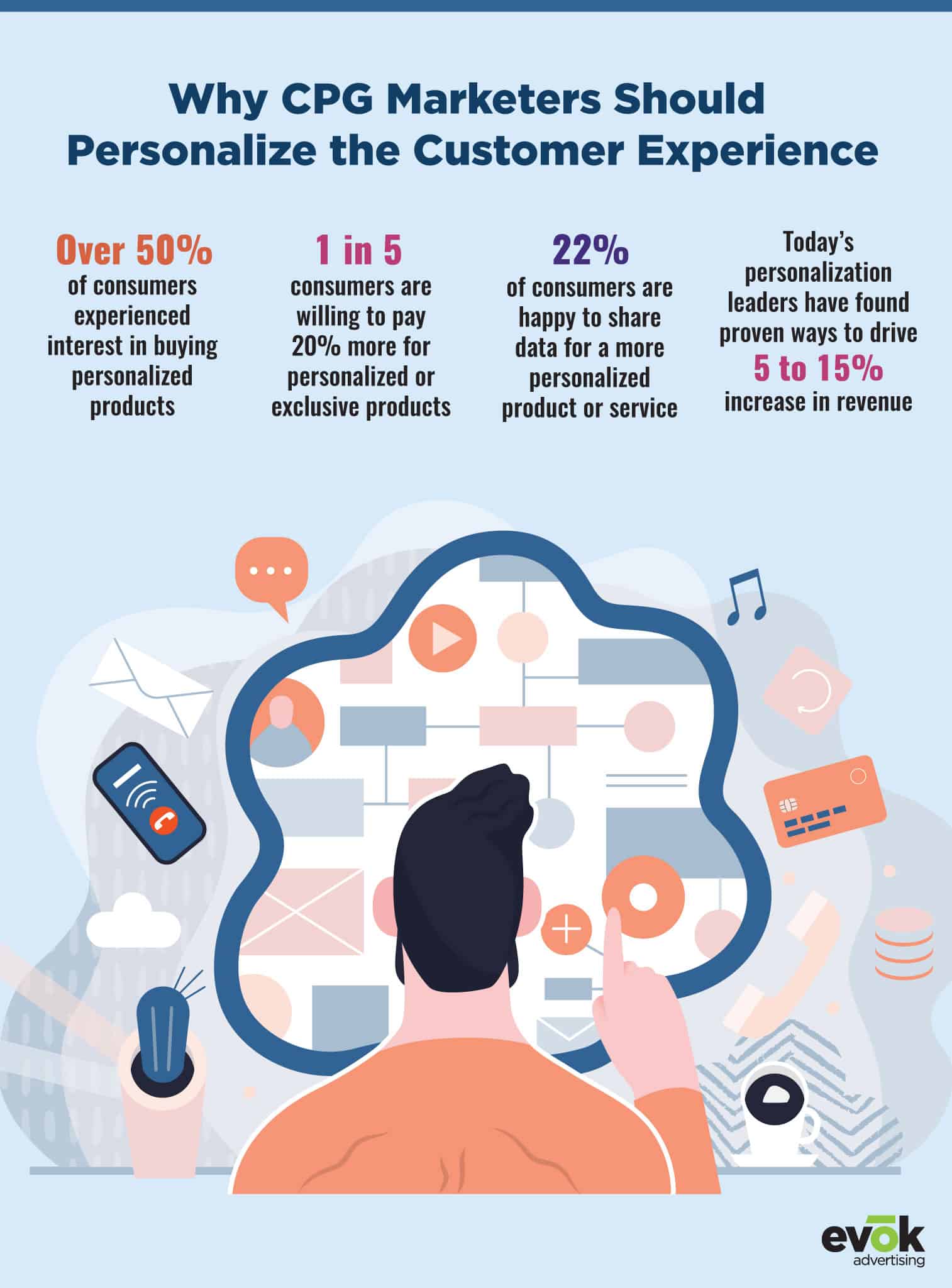
Product Packaging: Marketing Agency Tactics For Influencing Consumer Opinion
Your product’s packaging is the first thing your potential customer interacts with whether they encounter it at the store or online. As consumers get savvier about their purchases, making sure your packaging captures your target consumer is extremely important in increasing sales and building brand loyalty.

Did you know consumers spend less than a full second deciding which products to put in their cart at the supermarket? Influencing this split-second decision-making is possible by studying consumer behavior, applying psychological principles to your package design strategy, and fully understanding your target audience’s sensibilities. Marrying these three tenets of consumer insight can provide the information needed to create a compelling package design that is functional, informational, and aesthetically pleasing. Keep reading to discover some research-backed strategies for a packaging design for your CPG brand.
Does Your Packaging Accurately Represent Your Product/Brand?
Product packaging that fits with the brand image of the company resonates more with consumers. For example, Apple product packaging is sleek and clean, which fits with their brand image. When you buy an Apple product, you have certain expectations for the quality of the entire unboxing experience.
However, a product like a drill or a power tool has a different brand identity and packaging feel. The packaging might have a bold all-caps font, have more specific information about the product on the exterior packaging, and may even come packaged in a carrying case for a more convenient way to store and transport all the little bits and accessories that go along with the tool.
The exterior of an Apple product package and a power tool package speaks to two very different types of consumers and the products are used for two completely different purposes. The packaging not only communicates who this product is for, but also accentuates and supplements the experience with the product itself.
It’s important to consider your brand as a whole and what kind of customer your products are for. Do your brand and products have a luxurious and modern feel to them? Or are they more utilitarian and uncomplicated? A great way to determine your brand’s personality is using the twelve brand archetypes. The archetypal advertising system describes twelve different personality categories your consumers would likely fit into. The system was created by Carl Jung and Sigmund Freud, prominent psychologists in the early 20th century. By breaking down each archetype by what characteristics attract each type, you can ensure your product packaging (and brand messaging) are speaking to the right audience.
Then, once your target audience persona (or blend of personas) are solidified, you can begin considering how the consumer might interact with your product, what accessories might be useful to include with the product, and how the packaging can contribute to the customer’s convenience.
Color Theory and Typefaces Communicate a Lot About Your Product
Going along with archetypal advertising strategies, color theory can be applied to your packaging strategy to further communicate who your product is geared towards and what kind of experience your product can offer the consumer.
Color theory provides a way to differentiate your product to your target customers. Just by scanning down the cereal or chip aisle, a consumer can differentiate which items appeal to them without reading any of the package names or ingredients.
For example, cereals targeted towards children like Apple Jacks or Fruit Loops use vibrant colors to attract a child’s attention, while cereals geared towards adults like Raisin Bran have more pastel colors that convey maturity. Metalics and dark colors can evoke a sense of luxury or that the product is geared towards adults, while bright colors give the impression that the item is geared towards children or young adults. Clean san-serif typefaces convey a modern or sleek feel while bold and rugged typefaces communicate that the product is robust or flavorful.
Consider your products, as well as your brand archetype, when choosing colors and typefaces for your packaging to make sure that the overall look of your product captures the personality of the personality archetype you’re trying to attract.
Does the Package Look Like It’s Environmentally Friendly?

Environmentalism is becoming hugely important to Millennials and Generation Z, and many are looking to swap their old favorite products out for more environmentally friendly options. Research shows that customers are more attracted to products that they believe to be eco-friendly and/or have recyclable packaging. Consumers even report that they feel like a product that they assume is more environmentally friendly or “healthy” tastes better than the original product.
Marking your products with claims like “natural” or adding design elements that make your product appear more environmentally friendly can prove to be a difficult balance. “Greenwashing” is a term used by savvy consumers to describe a product or brand that is making unbacked claims about sustainability, eco-friendly packaging or ethical manufacturing practices. “Greenwashing” can also refer to adding literal green elements to your packaging to make it appear more eco friendly without actually making any claims.
If you want your CPG brand and products to appeal to consumers who care deeply about sustainability and the environment, it’s important to make sure your product and packaging are truly more sustainable, that the manufacturing process is ethical and environmentally friendly, and that packaging is easily recyclable. If you aren’t able to prove that your product is more sustainable or eco-friendly than your competitors, it’s best to avoid making any kind of claims or references to environmentalism at all.
If you’d like to read more about pivoting your CPG brand to be more eco-friendly, you can reference our blog on sustainability.
What Kind of Experience Are Your Consumers Having with Your Package?
Making sure your packaging is designed to function alongside your product is principal to ensuring your customers have a good experience with your product. Who would be a repeat customer of a brand that doesn’t put handles on large boxes when their close competitor does?
Making sure small products have easy to open packaging is also crucial to making sure your consumers don’t feel frustrated trying to pry open your product or send small parts flying through the air. Opening the package is one of the first interactions your consumer has with your product post-purchase, so you want to make sure that the unboxing process is relatively effortless.
Is Your Packaging Easy to Damage?
Customers are immediately turned off by brands with damaged packaging. Around 55% of consumers will stop buying a particular brand if the packaging is too easily damaged or looks bent and broken. This is especially true if the product is foodstuff or something that’s otherwise perishable. Even if the item inside is sealed or undamaged, you could be losing potential customers simply because your packaging got roughed up in transit. You can’t always control the way your products are handled after they leave your office or factory, but you can create packaging that is durable enough to handle some bumps in the road.
You don’t want your customers to view your brand as “cheap” or “disheveled” because the packaging is bent or torn by the time they receive your product. This can make or break the entire life cycle of a consumer’s decision making process, so make sure to check in with your consumers or visit a store where your products are stocked to see how well your packaging holds up.
The Consumer Packaged goods industry is a competitive and oversaturated market, which can make it difficult for new and innovative products and brands to fight for a spot on the supermarket shelf. Having an airtight product packaging strategy is the first step your brand can take to securing a space for your products in the lives of your target consumers.